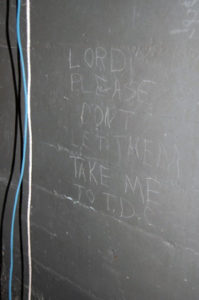For over ninety years the City of Greenville had no public space for its government. Back rooms of stores or saloons were used for city council meetings, other departments rented space in every thing from hotels to rooms adjacent to doctors or dentist offices. In the early days, the mayor was often a storekeeper using his storeroom as the mayor’s office.
By the 1930s the city decided it was time to have a real City Hall with space for police, water, electricity, fire department, and a real jail. For years the city had paid the county to share their jail. But the Great Depression that officially began with the stock market crash of 1929 created an inordinate lack of funds for anything but the most vital necessities. One of recently elected President Franklin D. Roosevelt’s main goals was to increase work for both manual laborers and professionals such as contractors and architects. He instituted the New Deal to help put people back to work.
Auditoriums, city halls, fire and police stations along with jails were acceptable to the Public Works Administration (PWA) programs. The first round of application began on August 19, 1933. Thousands of cities, including Greenville, applied for grants and loans of more than $25,000 upon completion.
Greenville submitted a very detailed document that included everything about the city, why help was needed, what the city assets were and what assistance was needed in the local opinions. One statement claimed that the “City of Greenville leased jail space at the abandoned county jail.” Well that wasn’t exactly true. It suggested that the jail was in derelict condition. However, when the new county court house was opened in 1929 all prisoners were moved to the fifth and sixth floors there. The city made a contract with the Hunt County Commissioners Court to renovate the old county jail at the intersection of Jordan and Stuart Streets as a city prison. Once the renovation, which the city paid for, was complete prisoners arrested by city officers would be held there.
The old jail had been empty for three years except for birds and an occasional tramp seeking shelter from the weather. Improvements were not to be extensive, just more habitable and sanitary when the first city prisoners arrived.
However, that was not what knocked Greenville out of the running for the grant/loan. All the money was taken by the time Greenville submitted its application. However, the mayor and city council held on to all that work and were rewarded in 1938 when the second round of application were taken. This time Greenville was one of 7,000 communities approved.
Two jails were built, one for men and the other for women who were given a kitchen to cook for the men. Both jails were racially segregated. The jails were stacked on top of each other with the women above. Under the jails were dressing rooms for auditorium performers to use. The Municipal Building and Auditorium opened on October 9, 1939 to the delight of Greenville, Hunt County and neighboring communities.
Often the prisoners could be heard singing prison songs or along with performers. Prisoners were detained there until the 1970’s. Yet they left their marks. One inhabitant scratched on the wall, “Please Lord, don’t let them take me to TDC (Texas Department of Corrections).” There were worse places than the Greenville jail.

